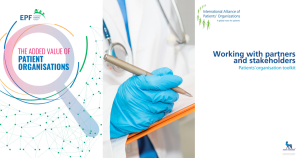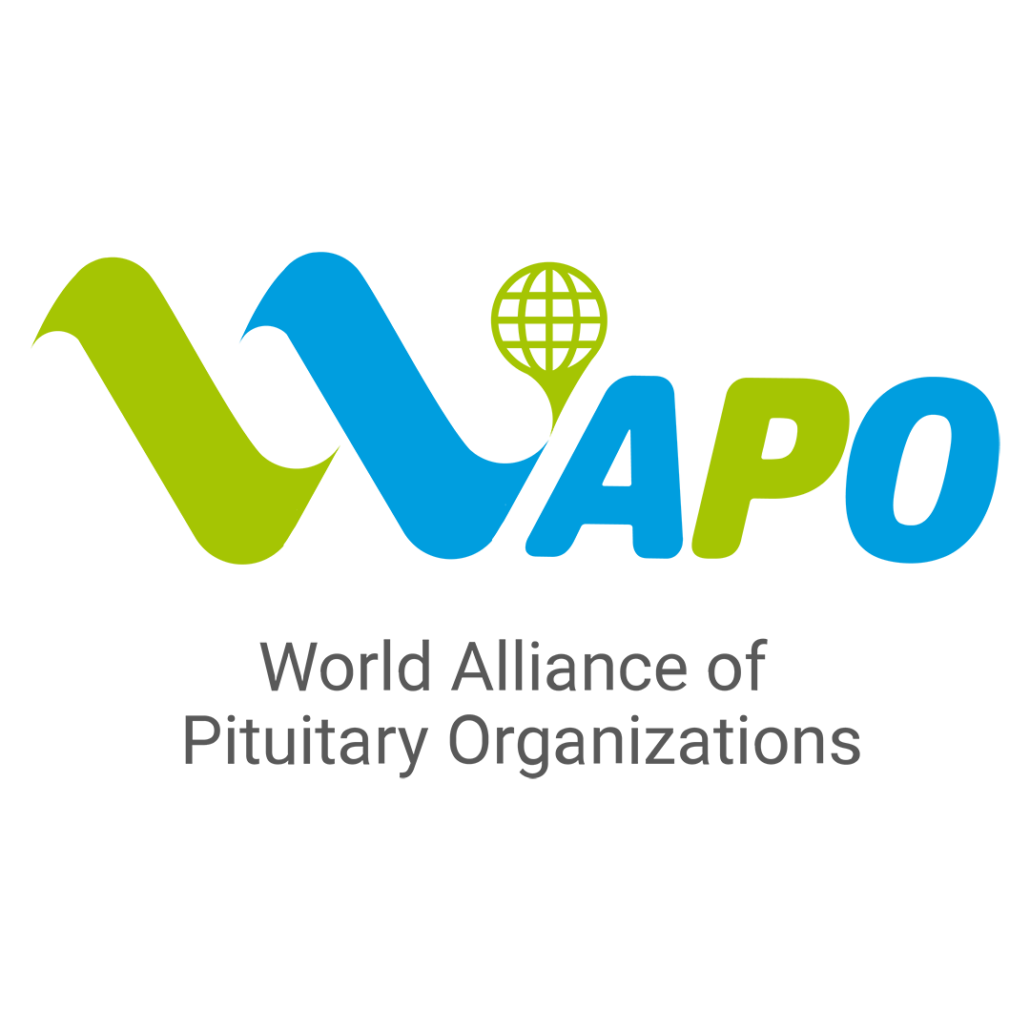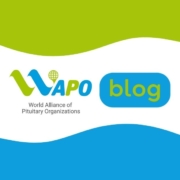Collaborations between Patient Advocacy Groups and Pharmaceutical Companies
Collaborations between Patient Advocacy Groups and Pharmaceutical Companies
The importance of patient involvement in the medicines development process is now widely recognized. The lived experience of patients brings added value at every step of a medicine’s life cycle. Successful and ethical collaborations between patient advocacy groups and pharmaceutical companies are therefore critical for both parties. These collaborations work in various ways to improve healthcare outcomes, promote awareness, and advance research and development.

At the 2023 WAPO Global Summit in Buenos Aires, WAPO board member Clive Deverson ran a very popular workshop on Patient Advocacy Groups’ Interaction with Pharmaceutical Companies. In this month’s blog he will provide examples of how these two groups can work together, but more importantly he will share information and resources covering the restrictions and challenges facing the pharmaceutical industry when it comes to working with patients.
The purpose of this blog will be to:
• Explain why pharmaceutical companies cannot always do what patients or patient advocacy groups wish them to do – the guidelines and codes of practice that govern these collaborations,
• Showcase recent trends in these relationships and activities to inspire the development of your own interactions with pharmaceutical companies,
• Share ‘how to guides’ and toolkits from patient advocacy organizations similar to WAPO.
It should be noted that these patient/industry partnerships can take a variety of forms including funding for patient advocacy groups’ activities, clinical trial collaboration, patient education and awareness, policy advocacy, research and development collaboration, access and affordability initiatives, participation in advisory boards, transparency and communication, and regulatory engagement.
With this wealth of possibilities it is easy to imagine the many opportunities that can result from a successful collaboration between patient advocacy groups and pharmaceutical companies. However, guidelines must be in place to ensure that ethical standards are upheld and that transparency is maintained in all interactions.
Guidelines and Codes of Practice
To start, I will present some of the current guidelines and codes of practice used by the pharmaceutical industry when interacting with patient organizations. As I am based in the UK, I will first share the rules and regulations that apply here.
The Association of the British Pharmaceutical Industry (ABPI) is the trade association for over 120 companies in the UK. They have their own Code of Practice that outlines industry requirements, helping companies adhere to self-regulation principles and operate professionally, ethically, and transparently. They have also developed specific guidance and source book resources to drive the effective partnerships with patients and patient advocacy groups. One of their publications is entitled Working with Patients and Patient Organizations: A Sourcebook for Industry, and its aim is to “help pharmaceutical companies and patient organizations plan how best to engage and work together successfully”.
To help communicate these points more effectively, the ABPI collaborated with National Voices, a UK social care organization, to create the valuable document: Working together, delivering for patients: A guide to collaboration between charities and pharmaceutical companies in the UK. It outlines four main principles for collaboration to be followed by both parties: clarity of purpose (awareness of the planned goals or benefits), integrity (honesty and integrity should be upheld), independence (independence should be maintained) and transparency (disclosure of collaboration purpose and any exchange of funding).
Of course the scope of patient involvement in the research and development process can start as early as establishing research priorities and continues throughout the various evaluation and authorization steps of the regulatory process. The European Medicines Agency (EMA) has actively involved patients in the agency’s activities and these interactions are outlined in a document entitled, Engagement framework: European Medicines Agency and patients, consumers and their organizations.

Trends in patient engagement with industry
In the past 10 years, patient engagement with pharmaceutical companies has increased and, in some cases, patients are being involved at earlier stages of the drug development pipeline. Reducing barriers to patient engagement through the use of new technologies has also increased since the COVID-19 pandemic and has allowed for more collaboration to take place.
There is an excellent publication highlighting recent trends in the fast-evolving patient engagement & patient experience data landscape which has been created by Patient Focused Medicine Development (PFMD), a global collaborative and non-competitive coalition who strives to improve global health by co-designing the future of healthcare for patients WITH patients.
The paper, entitled Highlighting Recent Trends in the Fast-Evolving Patient Engagement & Patient Experience Data Landscape, provides a snapshot of current efforts and approaches that are helping to clarify regulatory and health technology assessment (HTA) expectations of patient engagement (PE) and patient experience data (PXD; evidence which captures the lived experiences of patients through a variety of patient engagement activities) across authorities in North America, Europe and Asia.
The trends outlined in this paper include:
• PE is becoming more prevalent in medicines development,
• The development and use of PXD represents a method to deepen patient engagement,
• PXD is being used increasingly by regulators and HTA bodies to help with decision-making.
Current regulatory and HTA guidance and approaches are being used to help set expectations and drive generation of evidence,
• The need for the definition of requirements is critical in providing patient experience data (e.g. the tools, purpose, users, timing, and impact). This definition will help to expand the development and utilization of patient experience data, thereby increasing its impact when it comes to healthcare decision-making,
• All stakeholders must adjust their procedures to optimize the usefulness of patient experience data and share the insights gained through patient engagement.
Clearly, listening to the patient’s needs and expectations is vital when it comes to increasing patient engagement with the pharmaceutical industry and for improving overall health outcomes.
In a recent publication entitled Co-creating with patients an impact framework across the medicine’s life cycle: a qualitative study exploring patients’ experiences of involvement in and perceptions of impact measures, 13 patient organization representatives were interviewed to give their insights and gather more details on previously defined patient engagement impact measures. The main areas for improvement identified in this study were 1) the need for additional qualitative context, such as patient quotes, satisfaction scores, and patient reported outcomes, 2) the need to define how patients influence the decision-making processes with direct feedback, and 3) the need to ensure that all terminology used is “patient-friendly”.
Another article published in 2023 and entitled Patient Engagement and Patient Experience Data in Regulatory Review and Health Technology Assessment: A Global Landscape Review, highlights the need for guidance tools and policies that integrate both PE and PXD in regulatory and HTA processes. Currently, PE and PXD are often used in isolation rather than in combination. PFMD is currently working with multiple stakeholders on the co-creation of a framework for the integration of PE and PXD in regulatory, health technology assessment, and patient-centered healthcare systems.
While there is a growing momentum of including patients in medicines development at all stages, there is still much improvement to be made and policies to be put in place in order to ensure that patients’ valuable insights are used to their full potential.
‘How to’ guides and toolkits for patient organizations wishing to collaborate with pharmaceutical companies
I would now like to share several toolkits and resources that patient organizations can refer to when wishing to collaborate with the pharmaceutical industry.
The International Alliance of Patient Organisations, created the valuable resource entitled Working with Partners and Stakeholders Patients’ Organisation Toolkit. This was designed specifically to support patients organizations develop effective relationships with key stakeholders. It contains information and tools to help understand and overcome the challenges that they sometimes experience when working with external parties.

The European Patients Forum also created a report on the Added Value of Patient Organisations, which provides useful background information to support the positioning of a patient advocacy group.
The European Patients’ Academy on Therapeutic Innovation (EUPATI) offers an online toolbox as well as guideline documents that aim to help integrate patient involvement at all stages of the medicines research and development process with regulatory agencies, health technology assessment (HTA) bodies, ethics committees and the pharmaceutical industry.
Finally, I wanted to share a very practical and informative guide from the Axial Spondyloarthritis International Federation, entitled Working with the Pharmaceutical Industry. This guide covers such topics as how pharmaceutical companies can support your organization, how to connect with a pharmaceutical company, how to establish and build a relationship, the types of support the pharmaceutical companies can provide, the process involved with requesting funding and what to do once you have a grant.
These resources, along with the previous information mentioned, can really provide you with the catalyst to develop your interactions with pharmaceutical companies.
We thank Clive for this informative blog on a topic that is often difficult to navigate for many patient organizations. With these tools and resources we hope that your patient organization will have a better idea of how to initiate and steer meaningful collaboration with pharmaceutical companies. Remember that there are always benefits and challenges that come with these types of collaborations and they must be discussed in a transparent and open manner in order for a meaningful partnership to be established and maintained.
References:
Working with Patients and Patient Organizations: A Sourcebook for Industry;
The Association of the British Pharmaceutical Industry (ABPI).
Working together, delivering for patients: A guide to collaboration between charities and pharmaceutical companies in the UK; National Voices and ABPI
European Medicines Agency (2014) EMA/637573/2014. https://www.ema.europa.eu/en/documents/other/revised-framework-interaction-between-european-medicines-agency-patients-consumers-their_en-1.pdf
Patient Focused Medicines Development (PFMD). Highlighting recent trends in the fast-evolving patient engagement & patient experience data landscape. https://patientengagement.synapseconnect.org/resources/highlighting-recent-trends-in-the-fast-evolving-patient-engagement-patient-experience-data-landscape
International Alliance of Patients’ Organizations. (2011). Working with partners and stakeholders: Patients’ organisation toolkit. London, UK: International Alliance of Patients’ Organizations. https://www.iapo.org.uk/working-partners-and-stakeholders-toolkit
The European Patients Forum (EPF). Added Value of Patient Organisations
Warner K, See W, Haerry D, Klingmann I, Hunter A and May M (2018) EUPATI Guidance for Patient Involvement in Medicines Research and Development (R&D); Guidance for Pharmaceutical Industry-Led Medicines R&D. Front. Med.5:270. doi: 10.3389/fmed.2018.00270
Gorbenko, O., Cavillon, P., Giles, R.H. et al. Co-creating with patients an impact framework across the medicine’s life cycle: a qualitative study exploring patients’ experiences of involvement in and perceptions of impact measures. Res Involv Engagem 8, 1 (2022). https://doi.org/10.1186/s40900-022-00334-0
Bertelsen, N., Dewulf, L., Ferrè, S. et al. Patient Engagement and Patient Experience Data in Regulatory Review and Health Technology Assessment: A Global Landscape Review. Ther Innov Regul Sci 58, 63–78 (2024). https://doi.org/10.1007/s43441-023-00573-7




